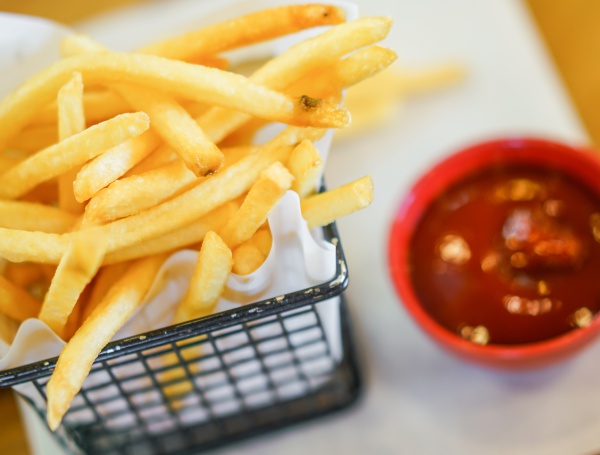28 Sep Toxic Chemical Acrylamide
 Acrylamide is a chemical that naturally forms in starchy food products during everyday high-temperature cooking, including frying, baking, roasting at +120 °C and low moisture. The main chemical process is the Maillard Reaction; it is the same reaction that ‘browns’ food and affects its taste. Acrylamide forms from sugars and amino acids (mainly one called asparagine) that are naturally present in many foods. Acrylamide is found in products such as potato crisps, French fries, bread, biscuits and coffee. It was first discovered in foods in April 2002 although it is likely that it has been present since cooking began. Acrylamide also has many non-food industrial uses and is present in tobacco smoke.
Acrylamide is a chemical that naturally forms in starchy food products during everyday high-temperature cooking, including frying, baking, roasting at +120 °C and low moisture. The main chemical process is the Maillard Reaction; it is the same reaction that ‘browns’ food and affects its taste. Acrylamide forms from sugars and amino acids (mainly one called asparagine) that are naturally present in many foods. Acrylamide is found in products such as potato crisps, French fries, bread, biscuits and coffee. It was first discovered in foods in April 2002 although it is likely that it has been present since cooking began. Acrylamide also has many non-food industrial uses and is present in tobacco smoke.
Dangerous for all age groups
According to researches, acrylamide in food potentially increases the risk of developing cancer for consumers in all age groups. Currently, studies on human subjects have provided limited and inconsistent evidence of increased risk of developing cancer. However, based on animal studies, acrylamide can cause cancer by developing gene mutations and tumours in various organs. Home-cooking choices can have a substantial impact on the level of acrylamide humans are exposed to through diet.
Mostly affects children
While acrylamide affects all consumers, on a body weight basis, children are the most exposed age group. For most children, fried potato products account for up to half of all dietary exposure to acrylamide with soft bread, breakfast cereals, biscuits, crackers and crisp breads amongst the other contributors. Baby food (mainly rusks and biscuits) is the most important source for infants.
How we can reduce the natural exposure of acrylamide
First of all, we shouldn’t eat one type of food. This can cause more exposure to acrylamide. We are supposed to fill our plate with a variety of foods. The storage method and the temperature at which food is cooked can influence the amount of acrylamide in different food types. Let’s see the right choices for reducing the level of dietary exposure of acrylamide according to European Food Safety Authority (EFSA):
Choice of ingredients
Coffee substitutes made from chicory generally contained on average six times more acrylamide (3mg/kg) than cereal-based coffee substitutes (0.5mg/kg)
Fried products made from potato dough (including crisps and snacks) generally contained 20% less acrylamide (338µg/kg) than those made from fresh potato (392µg/kg)
Potatoes grown in sulphur-deficient soil usually accumulate less asparagine, reducing acrylamide formation during heating
Storage method
Storage of potatoes at below 8°C generally increases sugar levels in potatoes, potentially leading to higher acrylamide levels following cooking
Soaking potato slices in water or citric acid solution can reduce acrylamide levels in crisps by up to 40% or 75%, respectively.
Temperature and duration
Temperature generally increases acrylamide levels in French fries more than cooking time; frying above 175°C can lead to greatly increased levels.
Consumer preferences for crispy and brown French fries and other fried potato products may increase average dietary exposure by 64% (for high consumers, by 80%)
Toasting bread for five minutes instead of three minutes can increase the acrylamide content from 31µg/kg up to 118µg/kg, depending on the bread type and temperature of the toaster. Consumption of well-toasted bread, however, only increases overall average dietary exposure by 2.4%.
